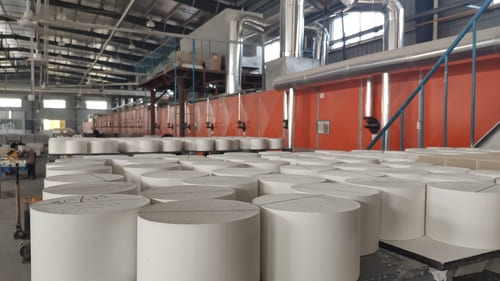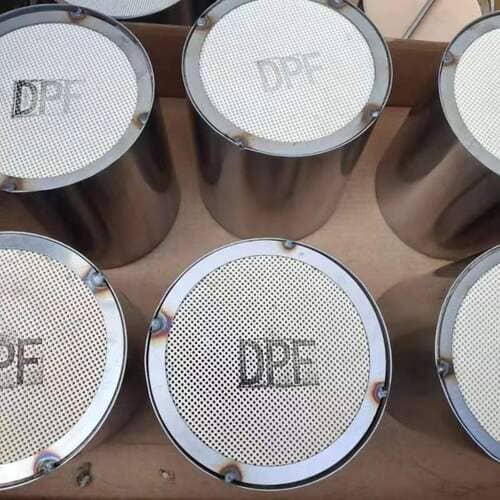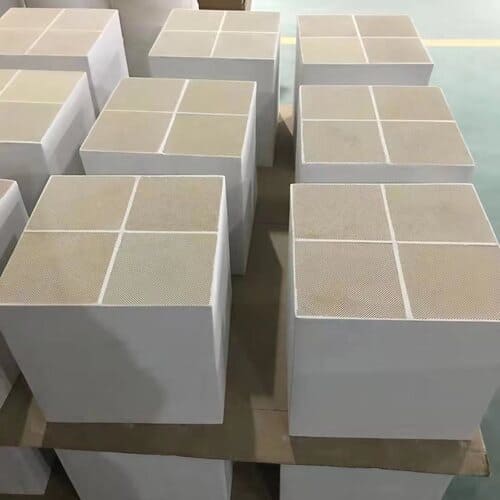Have you ever considered how industries and vehicles manage to minimize their environmental footprint? Or how they ensure that harmful emissions are reduced before being released into the atmosphere? The answer often lies in the use of ceramic honeycomb. But in what applications is ceramic honeycomb commonly used, and why is it so effective?
Ceramic honeycomb is a versatile and essential component in various emission control technologies. Its unique structure and material properties make it an ideal solution for a wide range of applications, from automotive to industrial processes. Let’s delve into the common applications of ceramic honeycomb and understand its significance.

Automotive Catalytic Converters
One of the most well-known applications of ceramic honeycomb is in automotive catalytic converters. These devices are crucial for reducing harmful emissions from internal combustion engines. The honeycomb structure provides a large surface area for catalytic reactions, facilitating the conversion of pollutants like carbon monoxide (CO), hydrocarbons (HC), and nitrogen oxides (NOx) into less harmful substances such as carbon dioxide (CO2) and water (H2O).
Catalytic converters have been instrumental in reducing air pollution and meeting stringent emission standards. The durability and efficiency of ceramic honeycomb make it an essential component in these devices.

Diesel Particulate Filters (DPFs)
Diesel particulate filters (DPFs) are used to capture and remove particulate matter (PM) from diesel engine exhaust. The honeycomb structure of the ceramic filter traps soot and other particulates, preventing them from being released into the atmosphere. Over time, the trapped particulates are burned off during a process called regeneration, ensuring the filter remains effective.
DPFs are critical for reducing diesel emissions and improving air quality, particularly in urban areas with high levels of diesel traffic.

Gasoline Particulate Filters (GPFs)
Similar to DPFs, gasoline particulate filters (GPFs) are used in gasoline engines to capture particulate matter. As gasoline engines become more efficient and produce higher levels of particulates, GPFs are becoming increasingly important. The ceramic honeycomb structure ensures effective filtration and long-term durability.
Industrial Emission Control
Ceramic honeycomb is also widely used in industrial emission control applications. Factories, power plants, and other industrial facilities often emit pollutants that need to be controlled to meet environmental regulations. Ceramic honeycomb structures are used in various emission control devices, such as selective catalytic reduction (SCR) systems and regenerative thermal oxidizers (RTOs), to reduce NOx, VOCs, and other harmful emissions.

Air Purification
In addition to emission control, ceramic honeycomb is used in air purification systems. These systems are designed to remove volatile organic compounds (VOCs) and other pollutants from indoor and outdoor air. The honeycomb structure provides a large surface area for adsorption and catalytic reactions, making it an effective solution for improving air quality in homes, offices, and industrial settings.
Chemical Processing
Ceramic honeycomb is also used in chemical processing applications. It serves as a support structure for catalysts in various chemical reactions, including the production of chemicals, pharmaceuticals, and fuels. The high surface area and thermal stability of ceramic honeycomb make it an ideal choice for these applications.
Renewable Energy
In the field of renewable energy, ceramic honeycomb is used in fuel cells and other energy conversion devices. It helps improve the efficiency and performance of these systems by providing a stable and efficient platform for catalytic reactions.

Conclusion
Ceramic honeycomb is a versatile and essential component in a wide range of applications, from automotive catalytic converters to industrial emission control and air purification. Its unique structure and material properties make it an effective and durable solution for reducing harmful emissions and improving air quality.
By understanding the common applications of ceramic honeycomb, industries and consumers can appreciate its significance in environmental protection and emission control. Whether it’s reducing vehicle emissions, capturing particulate matter, or purifying air, ceramic honeycomb plays a crucial role in creating a cleaner and healthier environment.


